1. Overview
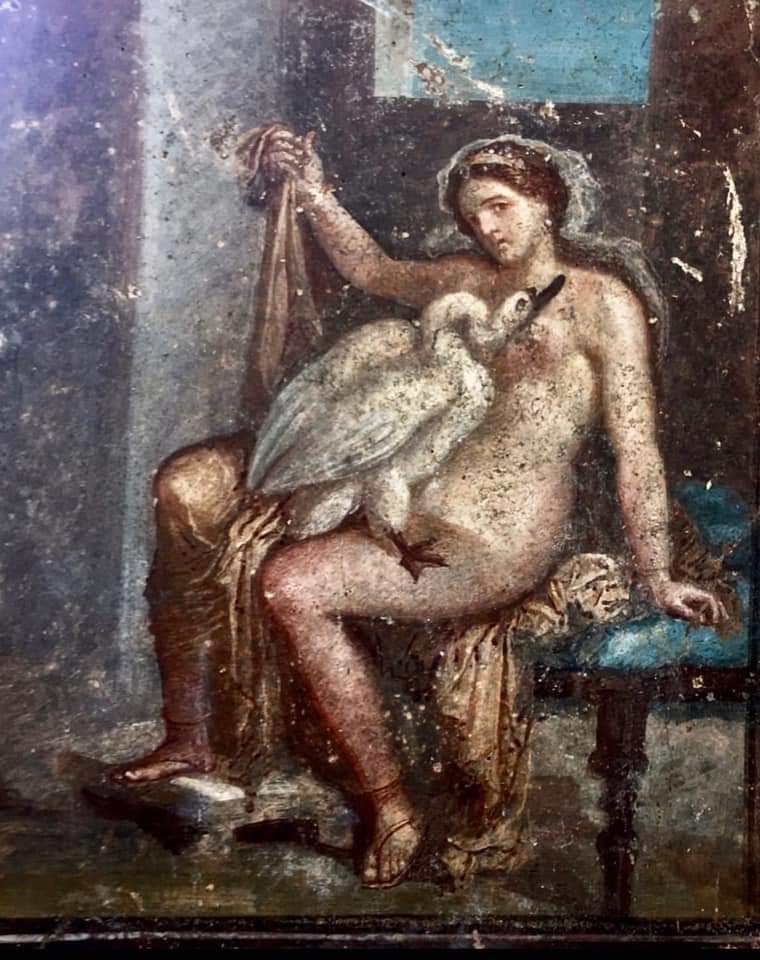
In Greek mythology, Leda (ΛήδαlɛːdaːGreek, Modern) was an Aetolian princess who later became the queen of Sparta. She was renowned for her exceptional beauty, described by Ovid as having beautiful black hair and snowy skin. Leda's myth is central to the popular motif of "Leda and the Swan" in Renaissance and later art, which depicts her encounter with Zeus in the guise of a swan.
Leda was the daughter of Thestius, the King of Aetolia, and wife to Tyndareus, the King of Sparta. Her children included the prominent figures of Helen of Troy, Clytemnestra, and the Dioscuri (Castor and Pollux). The exact parentage of these children, whether divine (Zeus) or mortal (Tyndareus), varies across ancient accounts, contributing to the complexity of her legend. Beyond her mythological narrative, Leda's name has influenced modern culture, being attributed to Leda, a moon of Jupiter, and (38) Leda, an asteroid.
2. Family and Marriage
Leda's familial connections and marital life are central to her mythological narrative, establishing her lineage and the parentage of her famous children.
2.1. Parentage and Siblings
Leda was primarily known as the daughter of Thestius, the Aetolian king, leading to her being sometimes referred to as Thestias. Accounts regarding her mother vary significantly among ancient sources:
- Hyginus suggests her mother was Leucippe.
- Scholia on Apollonius Rhodius names her mother as Deidameia, daughter of Perieres.
- Apollodorus identifies her mother as Eurythemis, daughter of Cleoboea.
- Alcman and Scholia on Apollonius of Rhodes mention Laophonte, daughter of Pleuron, as her mother.
- Alternatively, Alcman also states Leda's parents were Glaucus and Laophonte.
- Eumelus, as cited by a Scholiast on Apollonius Rhodius, proposed Sisyphus and Panteiduia or Paneidyia as her parents.
Leda had several siblings, including Iphiclus, Althaea, Plexippus, Eurypylus, Evippus, and Hypermnestra.
2.2. Marriage and Children
Leda married Tyndareus, the King of Sparta. Through this marriage, and her encounter with Zeus, she became the mother of several prominent figures in Greek mythology. Her children include Helen of Troy, Clytemnestra, Castor, and Pollux (also known as Polydeuces). In addition to these, Leda also bore three other daughters by Tyndareus: Timandra, Phoebe, and Philonoe.
The parentage of her most famous children, particularly Helen and the Dioscuri (Castor and Pollux), is a subject of varying accounts. While some traditions attribute all of them to Tyndareus, others distinguish between mortal children by Tyndareus and immortal or semi-divine children by Zeus. This ambiguity is a key element of Leda's myth.
3. Mythology
The mythology surrounding Leda primarily revolves around her encounter with Zeus and the subsequent birth of her children, which became a foundational narrative for numerous heroic tales.
3.1. Leda and the Swan
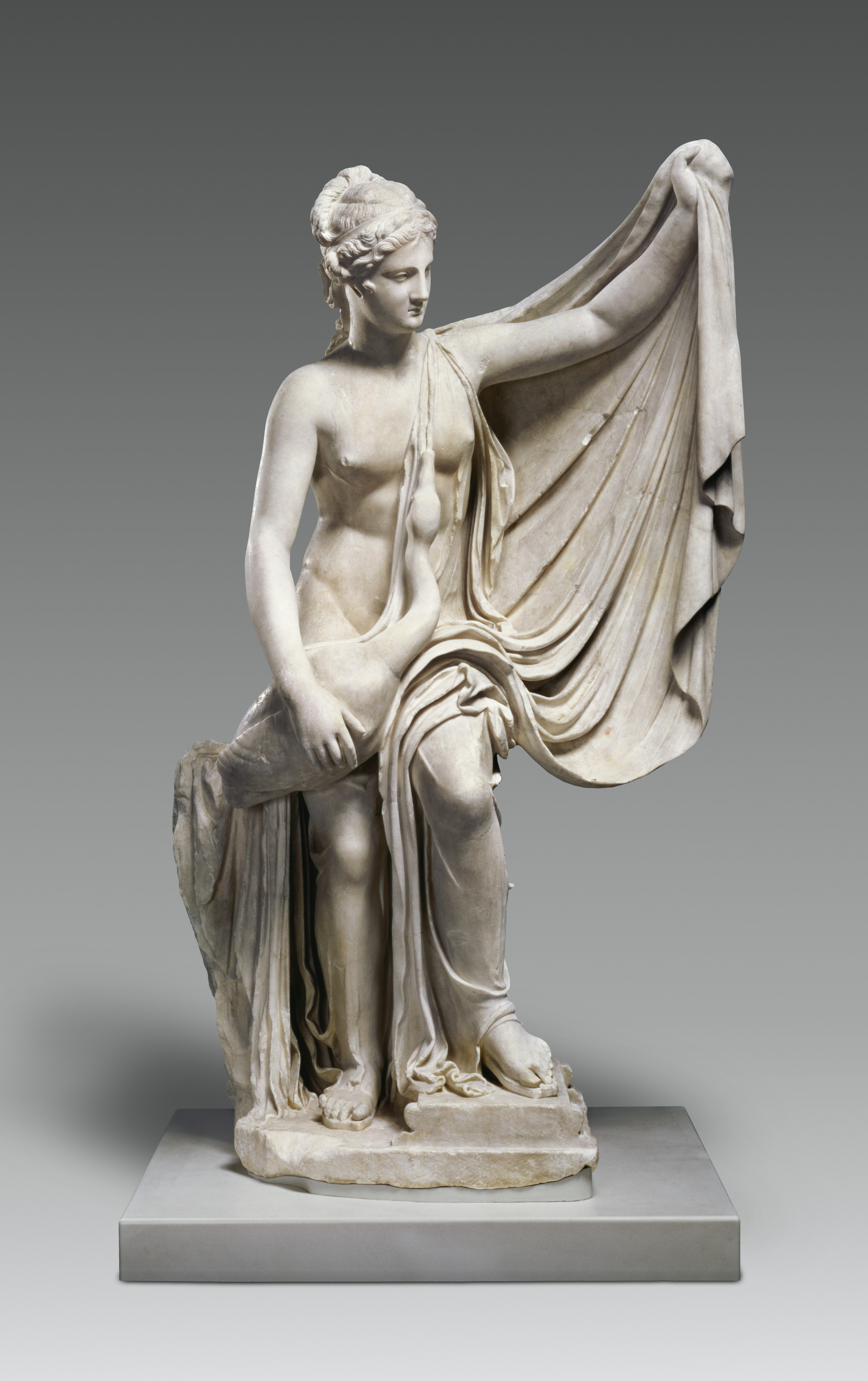
Leda was greatly admired by Zeus, who, desiring her, transformed himself into a swan to approach her. In this guise, Zeus orchestrated a scenario where he appeared to be pursued by an eagle, seeking refuge in Leda's arms. Leda, feeling pity for the distressed swan, embraced and protected him. While in her embrace, Zeus, disguised as the swan, either seduced or raped her. This fateful encounter occurred on the same night that Leda also lay with her mortal husband, King Tyndareus.
3.2. The Eggs and Offspring
The dual encounters with Zeus and Tyndareus resulted in Leda laying two eggs. From these eggs hatched her famous children: Helen (who would later become known as "Helen of Troy"), Clytemnestra, and the twin brothers Castor and Pollux (also known as the Dioscuri).
The specific parentage of these children and which child hatched from which egg is a subject of considerable inconsistency across ancient accounts. Generally, the offspring are split between mortal children fathered by Tyndareus and divine or semi-immortal children fathered by Zeus. However, the exact pairings vary.
- Helen is almost consistently stated to be the daughter of Zeus, and thus divine.
- For the Dioscuri, Castor and Pollux, their parentage is more ambiguous. Sometimes both are considered mortal, sometimes both divine. A common tradition holds that if only one of them is immortal, it is Pollux.
- Clytemnestra is typically regarded as the mortal daughter of Tyndareus.
In Homer's Iliad, when Helen looks down from the walls of Troy, she wonders why she does not see her brothers among the Achaeans. The narrator's remark that they are already dead and buried in their homeland of Lacedaemon suggests that, at least in the Homeric tradition, both Castor and Pollux were mortal.
3.3. Alternative Traditions
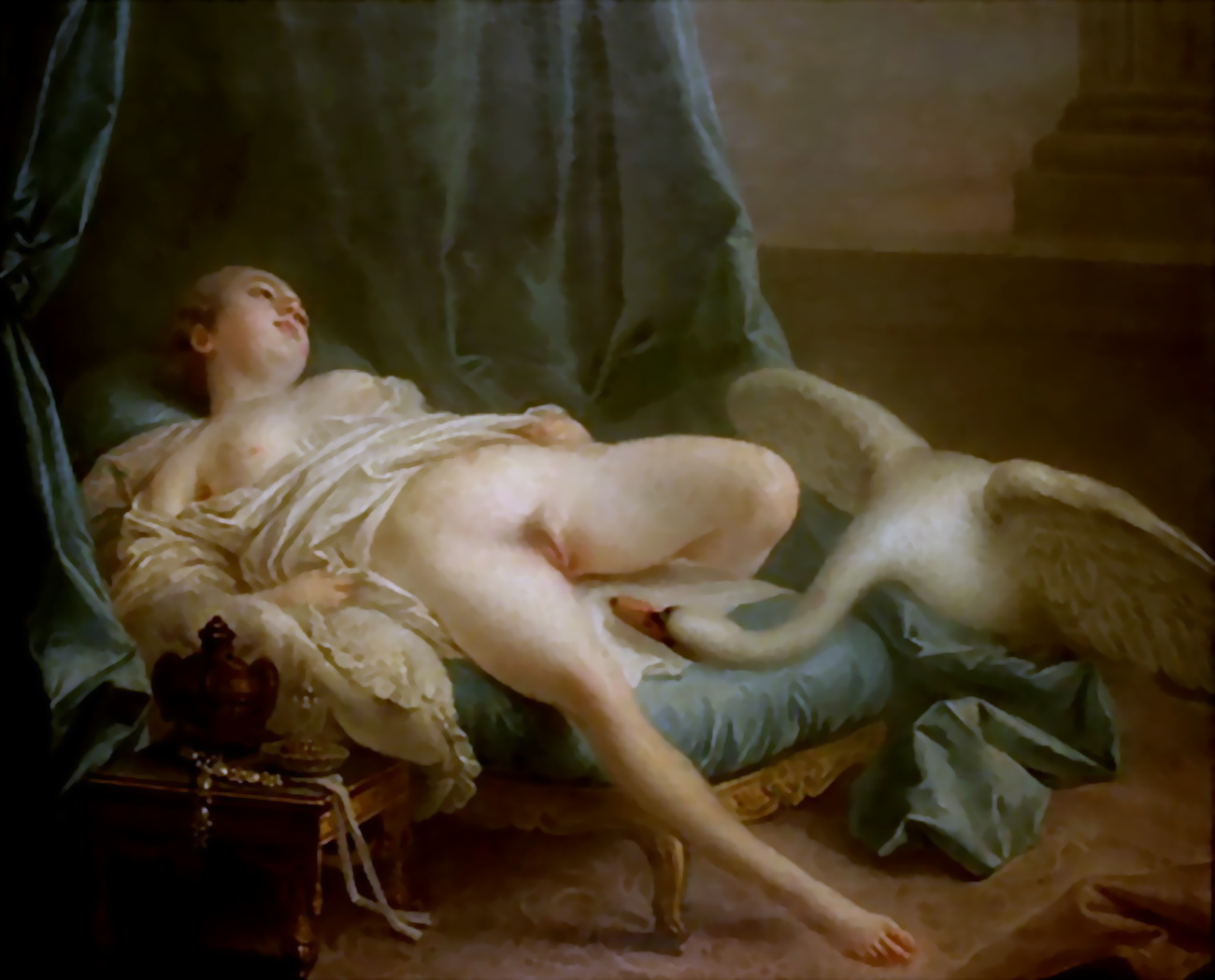
Several alternative traditions exist concerning the Leda myth, particularly regarding Helen's birth:
- One prominent alternative account states that Nemesis, the goddess of divine retribution, was the true mother of Helen. In this version, Nemesis was also impregnated by Zeus, who had taken the form of a swan. She then laid an egg.
- This egg was subsequently found by a shepherd, who then gave it to Leda. Leda carefully kept the egg in a chest until it hatched, at which point she adopted Helen as her own daughter.
- To commemorate the birth of Helen, Zeus is said to have created the constellation Cygnus (ΚύκνοςKyknosGreek, Ancient), meaning "the Swan," in the night sky.
- Some traditions suggest that Leda herself was originally an earth goddess and might have been identical to Leto.
4. Genealogy
Leda's genealogy is complex, intertwining with various divine and mortal lineages, as detailed in ancient sources.
Leda's father was Thestius, the King of Aetolia. Her mother's identity varies across accounts, with sources naming her as Leucippe, Deidameia, Eurythemis, or Laophonte. Some traditions also suggest alternative parents for Leda, such as Glaucus and Laophonte, or even Sisyphus and Panteiduia.
Through her father Thestius, Leda's lineage can be traced back to Ares, the god of war, and Demonice, who was the daughter of Agenor and Epicaste. Ares himself was the son of Zeus and Hera. This makes Leda a descendant of prominent Olympian gods.
Leda married King Tyndareus of Sparta. Their children included Clytemnestra, Castor, Pollux, Timandra, Phoebe, and Philonoe. Helen is also attributed as Leda's daughter, though often with Zeus as her divine father.
Leda's children and siblings further expanded her family tree:
- Her sister Althaea was the mother of Meleager.
- Her daughter Clytemnestra married Agamemnon and bore children such as Iphigenia, Orestes, Electra, and Erigone.
- Helen, Leda's daughter, married Menelaus and had a daughter, Hermione, and a son, Nicostratus.
- Castor had a son named Anaxias.
- Pollux had a son named Mnasinus.
The following table summarizes Leda's family relations as presented in various ancient sources:
| Relation | Name | Sources | ||||||||||||||||||
|---|---|---|---|---|---|---|---|---|---|---|---|---|---|---|---|---|---|---|---|---|
| Hom. | Hom. Hymns | Eum. | Alc. | Pher. | Aes. | Eur. | Sch. on Apollon. | Dio. | Str. | Dic. | Apollod. | Hyg. | Luc. | Clement | Fulgentius | |||||
| Parentage | Thestius and Laophonte | ✓ | ✓ | ✓ | ✓ | |||||||||||||||
| Thestius and Deidameia | ✓ | |||||||||||||||||||
| Thestius and Eurythemis | ✓ | |||||||||||||||||||
| Thestius and Leucippe | ✓ | |||||||||||||||||||
| Glaucus and Laophonte | ✓ | |||||||||||||||||||
| Sisyphus and Panteiduia | ✓ | ✓ | ||||||||||||||||||
| Thestius | ✓ | ✓ | ||||||||||||||||||
| Siblings | Iphiclus | ✓ | ✓ | ✓ | ||||||||||||||||
| Althaea | ✓ | ✓ | ✓ | ✓ | ✓ | |||||||||||||||
| Plexippus | ✓ | |||||||||||||||||||
| Eurypylus | ✓ | |||||||||||||||||||
| Evippus | ✓ | |||||||||||||||||||
| Hypermnestra | ✓ | ✓ | ||||||||||||||||||
| Seducer (disguised) | Zeus | ✓ | ✓ | ✓ | ✓ | ✓ | ✓ | ✓ | ✓ | |||||||||||
| Consort | Tyndareus | ✓ | ✓ | ✓ | ✓ | ✓ | ✓ | ✓ | ✓ | |||||||||||
| Children | Castor | ✓ | ✓ | ✓ | ✓ | ✓ | ✓ | ✓ | ✓ | ✓ | ||||||||||
| Polydeuces | ✓ | ✓ | ✓ | ✓ | ✓ | ✓ | ✓ | ✓ | ✓ | ✓ | ||||||||||
| Helen | ✓ | ✓ | ✓ | ✓ | ✓ | ✓ | ✓ | ✓ | ||||||||||||
| Clytemnestra | ✓ | ✓ | ✓ | |||||||||||||||||
| Timandra | ✓ | |||||||||||||||||||
| Phoebe | ✓ | ✓ | ||||||||||||||||||
| Philonoe | ✓ | |||||||||||||||||||
Other significant relations within Leda's extended family include:
| Name | Relation | Name | Relation |
|---|---|---|---|
| Epicaste | Great-grandmother (Demonice's mother) | Iphiclus | Brother |
| Agenor | Great-grandfather (Demonice's father) | Helen of Troy | Daughter |
| Zeus | Lover/great-grandfather (Ares' father) | Clytemnestra | Daughter |
| Hera | Great-grandmother (Ares' mother) | Pollux | Son |
| Ares | Grandfather (Thestius's father) | Timandra | Daughter |
| Demonice | Grandmother (Thestius' mother) | Philonoe | Daughter |
| Cleoboea | Grandmother (Eurythemis' mother) | Castor | Son |
| Thestius | Father | Phoebe | Daughter |
| Eurythemis | Mother | Ladocus | Grandson (Timandra's son) |
| Evenus | Uncle | Iphigenia | Granddaughter (Clytemnestra's daughter) |
| Molus | Uncle | Aletes | Grandson (Clytemnestra's son) |
| Pylus | Uncle | Orestes | Grandson (Clytemnestra's son) |
| Marpessa | Cousin (Evenus' daughter) | Erigone | Granddaughter (Clytemnestra's daughter) |
| Tyndareus | Husband/Second-Cousin (Zeus's Great-Grandson) | Hermione | Granddaughter (Helen's daughter) |
| Althaea | Sister | Nicostratus | Grandson (Helen's son) |
| Eurypylus | Brother | Electra | Granddaughter (Clytemnestra's daughter) |
| Hypermnestra | Sister | Anaxias | Grandson (Castor's son) |
| Plexippus | Brother | Mnasinus | Grandson (Pollux's son) |
| Toxeus | Brother |
5. Legacy in Art and Culture
The myth of Leda, particularly her encounter with the swan, has profoundly influenced artistic creations, literature, and various cultural expressions throughout history, becoming a potent source of inspiration for artists across different eras.
5.1. Artistic Depictions
The "Leda and the Swan" motif, along with depictions of Leda and the egg or Leda with her children, were popular subjects in ancient art. Examples include ancient frescoes from Pompeii and 1st-century sculptures like the one housed in the Getty Villa. A restored Roman painting of "Leda and Zeus (Swan)" at the Museo del Prado, possibly based on a sculpture by Timotheus, also exists.
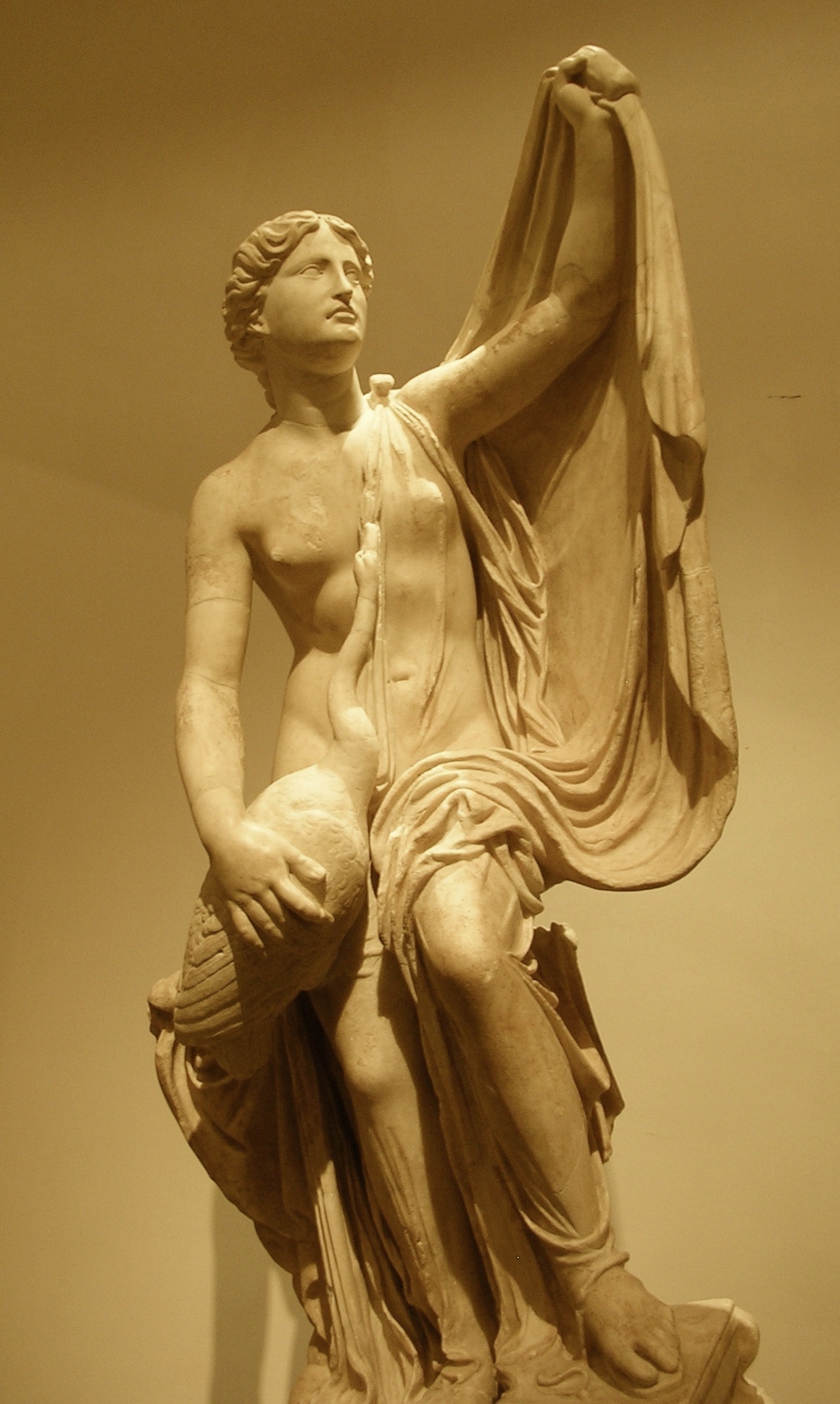
In the post-classical arts, especially during the Renaissance, the myth became a significant source of inspiration. Numerous prominent artists depicted the scene, often focusing on the sensual and dramatic aspects of the encounter. Key works include a 16th-century copy after the lost painting Leda and the Swan by Michelangelo, which captured the powerful Renaissance interpretation of the theme. Correggio's Leda with the Swan (1531), which is held at the Gemäldegalerie in Berlin. Leda and the Swan (1740) by François Boucher, which explicitly depicts Leda in a sexual encounter with Zeus. Gustave Moreau's Leda (1865-1875), which offers a more symbolic and dreamlike interpretation.
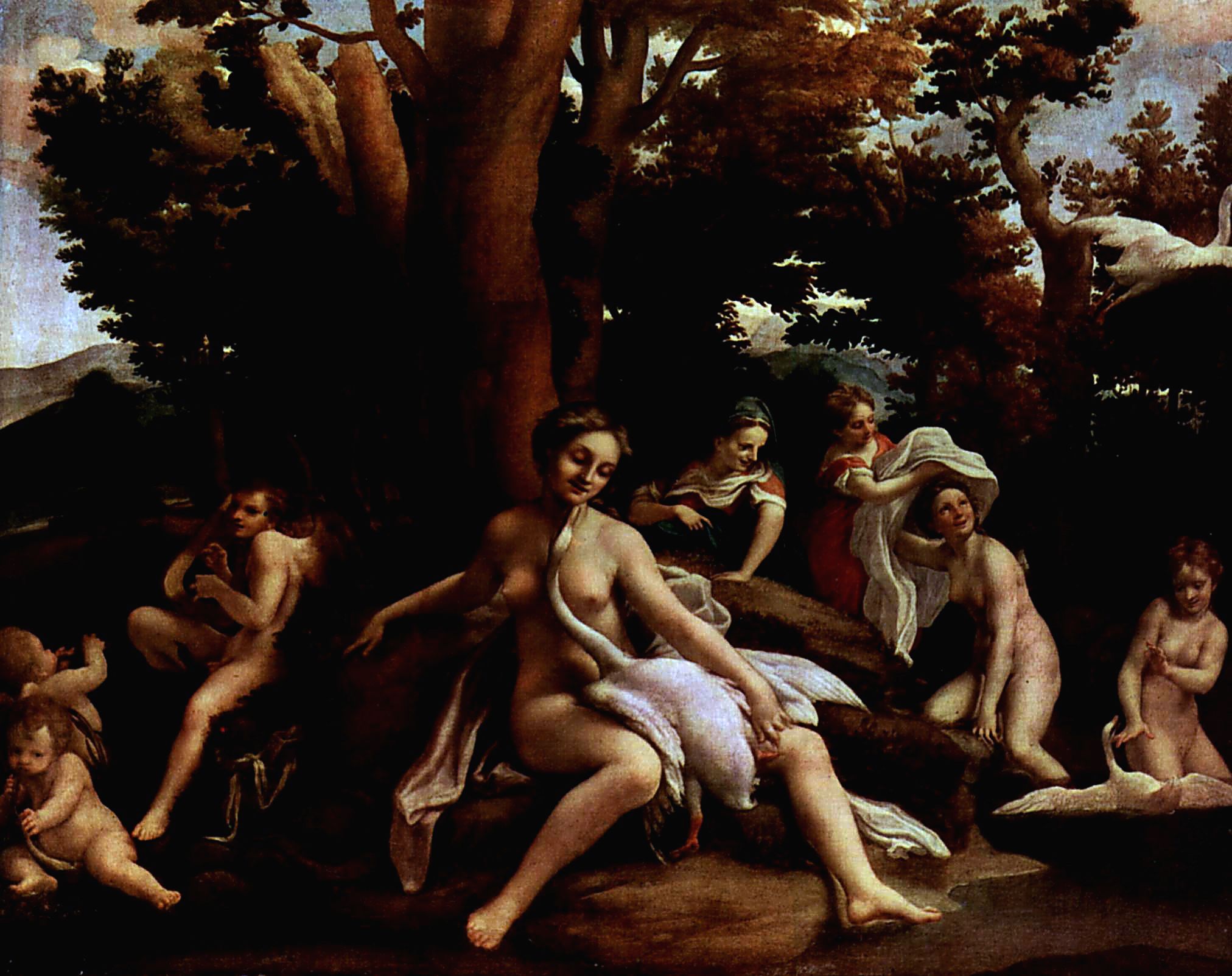

Beyond the Renaissance, the theme continued to inspire artists. Australian artist Sidney Nolan produced at least a dozen interpretations of Leda and the Swan in the 1950s and 1960s, connecting the myth to his broader work on the Trojan War and World War I myths. Additionally, Honoré Desmond Sharrer's large painting "Leda & the Folks" uses the myth as a central subject, also featuring the parents of entertainer Elvis Presley; this work is currently located at the Smith College Museum of Art.
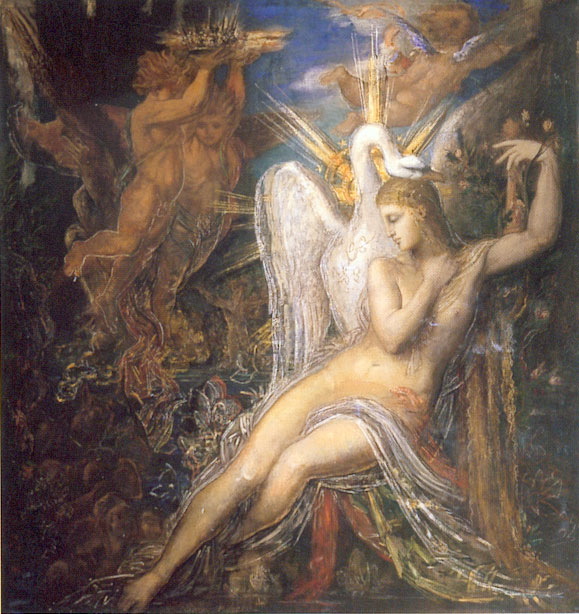
5.2. Literary and Other Influences
Leda's myth has also found its way into literature, poetry, and music. The most famous literary work is arguably William Butler Yeats' poem "Leda and the Swan", which explores themes of violence, divine intervention, and the origins of historical events. In more contemporary culture, the myth inspired Hozier to write the song Swan Upon Leda in October 2022, as a response to the Dobbs v. Jackson decision by the Supreme Court of the United States, which repealed Roe v. Wade.
Furthermore, Leda's name has been immortalized in astronomy. She is the eponym for Leda, the tenth moon of Jupiter, and for (38) Leda, an asteroid located in the asteroid belt.